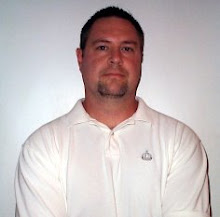Home Exercise Equipment part II:
Yesterday I talked about some simple equipment that can help you build strength and lose fat in the comfort of your home. Today I will talk about a piece of home equipment for strengthening your low back - the reverse hyperextension.
The reverse hyperextension is an exercise sometimes performed by competitive lifters and athletes. It places you face down on an elevated bench and allows you to strengthen your low back, glutes, and hamstrings at the same time.
These muscles are important for preventing low back pain, as well as performing well on the court or field. The home version is what I received last week and I have had a chance to try it out a few times. One of the significant features of this exercise, is the face down position, which places very little stress on the spine.
For those who might have disc problems in their back, this position is often recommended to help remove pressure. While lying face down the disc can't bulge out the back of the vertebrae. This exercise allows you to strengthen the muscles that support the spine in a neutral position.
In this exercise your back stays relatively straight, while your lower body is lifted in an arcing movement until the thighs are in a straight line (parallel) with the torso. This movement is supposed to strengthen and stretch at the same time, while providing movement to the muscles and vertebrae.
Bottom line, how does this piece of equipment work? Glad you asked. It is a decent piece of home equipment. In all honesty though, for the price, it is not significantly better than doing this exercise on a stability ball.
So unless you have deep pockets, my recommendation is to stick with the ball, which is the one of the most versatile pieces of home equipment for core training. Very few pieces of home equipment outperform the ball for the average person, especially when you consider the price. The average person who is just looking to stay fit and avoid injury.
Some of you with balance and stability issues might have to start with a modified exercise first. But if this is the case, you need to get some help from a professional, to get started on the right program.
I will still use the reverse hyperextension in my studio, because it gives me some different options. In most cases, it's not about the equipment, it's about the knowledge of the user or trainer. If you haven't read my article on using the stability ball for this exercise, click here.
Wednesday, July 18, 2007
Subscribe to:
Post Comments (Atom)




No comments:
Post a Comment